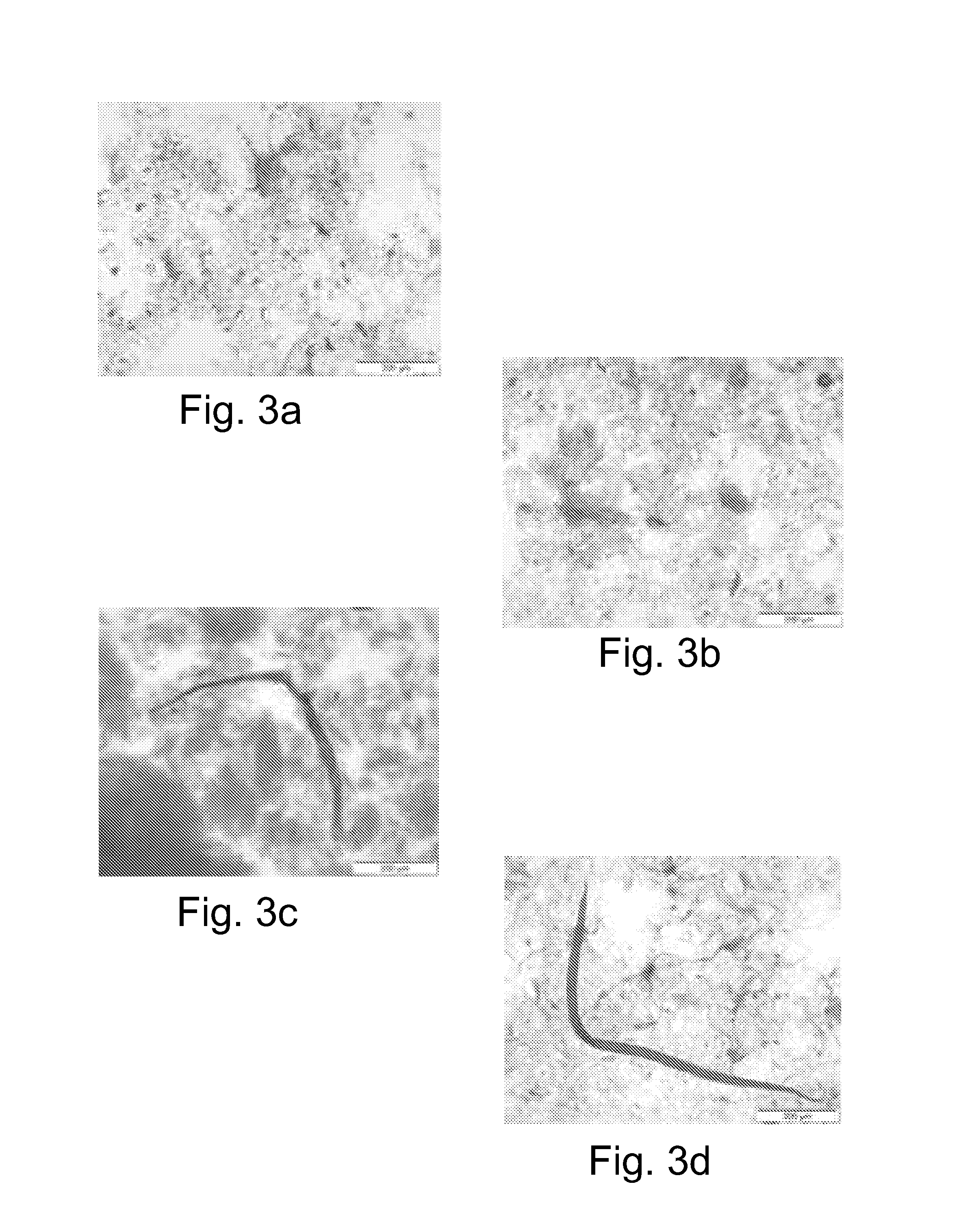Method and a system for manufacturing cellulose material
a technology of cellulose material and manufacturing method, which is applied in the field of method and cellulose material manufacturing system, can solve the problems of high beating energy required for the production of refined cellulose material, especially fibril cellulose material, and the efficiency problem of fibril cellulose production, so as to improve the dry matter content of fibril cellulose and facilitate the redigestion of water
- Summary
- Abstract
- Description
- Claims
- Application Information
AI Technical Summary
Benefits of technology
Problems solved by technology
Method used
Image
Examples
example 1
[0135]In the example, different cellulose fiber types were used with various chemical contents. The mechanical working was carried out by means of a sieve plate press with several runs through. After the treatment in the sieve plate press, fibrillation of the manufactured cellulosic material was conducted by Masuko Sangyo's Super masscolloider MKZA10-15J.
[0136]In a trial, the target was to reach DS levels between 0.05 and 0.20. Table 2 shows the results achieved by using the method according to the present invention. In addition, FIGS. 3a-3d show photomicroscopic images. FIG. 3a shows the test sample 1, FIG. 3b shows the test sample 2, FIG. 3c shows the test sample 3, and FIG. 3d shows the reference sample.
[0137]Exact formulas for synthesis of carboxymethylated (CM) fibres with a DS range of 0.05-0.20 are presented in Table 2. A formula is presented for one single batch. In the Table 2, the following abbreviations are used:
[0138]SMCA=sodium monochloroacetate (powder), and
[0139]Mech ...
example 2
[0143]The processing stages in this dry carboxymethylation test series were the following:
[0144]1. Coarse grinding with Rapid knife mill with screen plate mesh 10 mm. Fine grinding was performed by Rivakka hammer mill with screen plate mesh D 3 mm
[0145]2. Premix with Forberg: first cellulose, then SMC-solution by spraying and rotating the mixer 30 s, and finally NaOH-solution by spraying and rotating mixer extra 30 s.
[0146]3. Mechanical compacting with smaller scale modified Kahl compactor; running 4 times through the device
[0147]4. Reaction in flow-through oven with settings T=105° C. and t=60 min
[0148]5. Final grinding with knife mill Polymix PX-MFC 90D with screen plate mesh 2 mm
[0149]6. Wash inside a washing bag neutralization in the first wash; repeated 3 times.
[0150]Example 2 was repeated using various alkalizing agent and anionic agent amounts with respect to cellulose for different DS targets. The data are given in Table 3 below.
TABLE 3The chemical amounts relative to cellul...
example 3
[0151]The samples from the DS test series of example 2 were fibrillated in Masuko Super masscolloider MKZA10-15J using one pass. All the samples were diluted with tap water and predispersed for 10 minutes at 700 rpm in Diaf dissolver 100 WH.
[0152]Routine characterisation was done using turbidity, Brookfield viscosity, optical microscopy and pH. The amount of unfibrillated or fibre particles seemed to decrease gradually as a function of DS. The results are presented in table 4.
[0153]FIGS. 4a-4d show photomicroscopic images of the fibril cellulose material obtained in Example 3. FIG. 4a shows material with DS Of 0.07, FIG. 4b: DS 0.11, FIG. 4c: DS 0.16, and FIG. 4d: DS 0.19.
TABLE 4Summary of routine characterisationsof fibril cellulose material obtainedDSCons.mPas,meas.TurbiditypH[%]10 rpmkWh / kg0.072377.32.11311950.11927.21.487989100.16557.51.626270110.19508.02.52109307
[0154]As can be seen in the images and the numerical data, higher DS results in enhanced fibrillation, which in turn ...
PUM
| Property | Measurement | Unit |
|---|---|---|
| temperature | aaaaa | aaaaa |
| temperature | aaaaa | aaaaa |
| shear viscosity | aaaaa | aaaaa |
Abstract
Description
Claims
Application Information
 Login to View More
Login to View More - R&D
- Intellectual Property
- Life Sciences
- Materials
- Tech Scout
- Unparalleled Data Quality
- Higher Quality Content
- 60% Fewer Hallucinations
Browse by: Latest US Patents, China's latest patents, Technical Efficacy Thesaurus, Application Domain, Technology Topic, Popular Technical Reports.
© 2025 PatSnap. All rights reserved.Legal|Privacy policy|Modern Slavery Act Transparency Statement|Sitemap|About US| Contact US: help@patsnap.com



